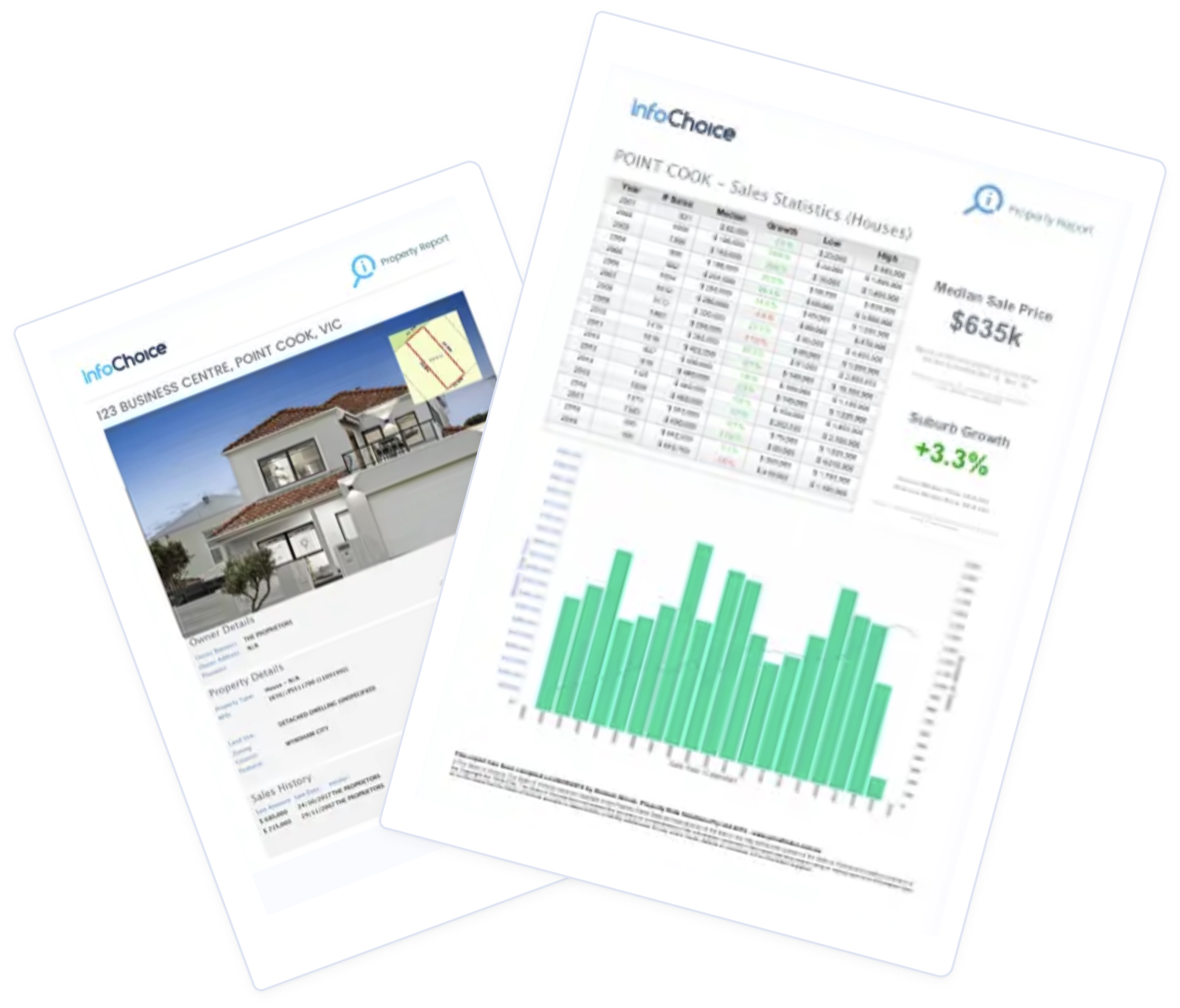
Bridging loans are for when you buy your new home before you’ve sold your own one and don’t have the budget or inclination to pay for it upfront or apply for a second mortgage. They ‘bridge’ the gap between getting money from the sale of the old home and funding the new one.
Bridging loans are typically delivered as interest-only loans, and require you to have a lot of equity in the old home, say around 50%, which mitigates risk for your lender. However some might only require 20% equity i.e. 80% LVR.
As a real world example, houses in Bondi (NSW, 4007) take on average 43 days to sell, according to REA. It’s very possible for your old home to take longer than this to list, sell, and settle, and for you to be left with financing requirements on your new home.
Bridging loan interest rates
Bridging loan interest rates tend to be a little higher than regular home loan rates. For example, if a regular home loan is 5.00% p.a. then it’s not unreasonable to see a bridging loan rate around the 8-9% p.a. ballpark.
Bridging loans tend to attract higher interest rates for three key reasons:
-
They are short term (less than 12 months).
-
They are interest-only.
-
The risk is higher for a lender as there are a lot of variables, such as the old home selling on-time, both homes are accurately valued, and that there is lots of equity in the home.
Some lenders might start off with fees for a short period, and technically charge zero interest, and then revert to a higher interest rate if you don’t sell your home within that time period.
How long can you have a bridging loan for?
This depends on the type of your bridging loan. Bridging loans are typically short-term loans offered anywhere from 3 to 12 months. The big banks typically offer longer periods, while smaller lenders offer shorter periods.
In addition, some lenders might only charge a fee for the first few months and if the home doesn’t sell in that time, the loan attracts traditional interest payments. The types of bridging loans are:
Closed Bridging Loan
A closed bridging loan has a fixed repayment date, usually because you have already sold your current property and are waiting for the sale to complete. This could still take 30 or more days depending on the contract you agreed to with the buyer.
Open Bridging Loan
An open bridging loan does not have a fixed repayment date but typically requires repayment within 6-12 months. This is usually for if you've already got a new property in your sights and want to move in while your old property is still on the market, or about to be put on the market.
What happens if you don’t sell your home in time?
Many bridging loans have maximum terms of 12 months. While it seems easy to sell your home in that time, there’s every chance it won’t.
If you don’t sell your home in this time, your bank might take matters into their own hands. This includes whacking you with extra fees or interest, using the home’s equity to fund the new loan, or selling it for you.
Bridging loan lenders and providers
You don’t have to take a gamble on relatively unknown fintech lenders with funny names; bridging loans are provided by larger regulated banks and lenders, such as:
| Lender | Home Loan | Interest Rate | Comparison Rate* | Monthly Repayment | Repayment type | Rate Type | Offset | Redraw | Ongoing Fees | Upfront Fees | Max LVR | Lump Sum Repayment | Extra Repayments | Split Loan Option | Tags | Features | Link | Compare | Promoted Product | Disclosure |
|---|---|---|---|---|---|---|---|---|---|---|---|---|---|---|---|---|---|---|---|---|
7.50% p.a. | 5.83% p.a. | $3,125 | Interest-only | Variable | $0 | $230 | 80% | Disclosure | ||||||||||||
7.15% p.a. | 7.23% p.a. | $3,377 | Principal & Interest | Variable | $0 | $250 | 80% | |||||||||||||
7.75% p.a. | 6.12% p.a. | $3,229 | Interest-only | Fixed | $0 | $220 | 80% | |||||||||||||
7.35% p.a. | 7.40% p.a. | $3,445 | Principal & Interest | Variable | $0 | $745 | 75% | |||||||||||||
8.77% p.a. | 8.80% p.a. | $3,654 | Interest-only | Variable | $0 | $300 | 85% | |||||||||||||
9.01% p.a. | 9.17% p.a. | $3,754 | Interest-only | Variable | $10 | $1,002 | 80% |
This list is not exhaustive.
Is a bridging loan a good idea?
There are a few benefits or conveniences to having a bridging loan, including:
-
Convenient: We get it, you want your new home now! And to move in and start your new life. A bridging loan allows you to do this without having to wait on the sale of your old home to fund the purchase.
-
Avoid renting: The alternative in the ‘bridging’ period is to rent short-term accommodations, especially if you are waiting on funds to clear to buy the new home. This adds to costs and inconveniences and likely means a lot of your furniture is in storage.
-
Repayments and costs could be low: If it all works smoothly, the bridging loan might mean you’re not out of pocket very much, at all, especially if your new home is cheaper than your old one.
- Handy at auctions: Auction contracts are unconditional and typically have 30 day settlement periods. A home going to auction usually has a four-week marketing period, which means you need to get your ducks in order if you want to bid/buy. If you've been approved for a bridging loan, you can purchase at auction with confidence without relying on the sale of your old home.
Alternatives to bridging loans
You don’t need to necessarily scramble and go to your bank for a bridging loan.
Second Home Loan
If you can manage repayments, consider taking a second home loan to finance the new property. Use the sale proceeds of your existing home to repay the original loan. This could be more suitable if your old home is taking a while to sell.
For this to be economical you would need to find a new home loan with minimal start-up fees, and flexible repayment terms.
Longer Settlement
Negotiate a longer settlement period on the new property to give yourself more time to sell your current home. A typical settlement period is 30 days but you could extend it to 60 days or longer, for example. Again, the vendor doesn’t need to accept, and in a hot market, they might opt for an offer with a quicker settlement period.
Conditions in Contract
Put a “subject to sale” condition in the purchasing contract of the new home. You can put all manner of conditions in the contract (apart from at auction), whether the vendor accepts it is another thing.
Deposit Bond
Use a deposit bond to secure the new property while waiting for the sale proceeds of your current home. This is useful for covering the deposit without needing immediate funds. This likely won't cover everything though - you'll need a second home loan for this to work. A deposit bond might also incur extra fees.
Wait to Sell
Sell your current home before purchasing a new one to avoid taking out additional loans. This ensures you know your budget for the new purchase. However this isn't always feasible, and it would involve finding short-term accommodation - or very supportive friends or relatives - to live-in, plus storage for your furniture, which could prove costly.
Bridging Loan Eligibility Criteria
To qualify for a bridging loan, lenders typically require:
- Significant equity in your current property: Many lenders like to see around 50% equity as this provides a cushion in case your property doesn't sell in a timely manner.
- Assurance that the existing property will sell within the bridging loan term: Hard to predict, however many bridging loans are valid for up to 12 months.
- Capacity to manage interest-only repayments during the bridging period: Interest-only keeps repayments lower, but it ultimately means you pay some interest costs, which will be factored in when your old home sells.
- Some lenders may only offer bridging loans to existing customers: If your current lender does not offer it, you may be out of luck. If you have a longer time frame or you're only thinking about selling, it could be worth refinancing to a lender that offers bridging loans.
Photo by Tim Patch on Unsplash






